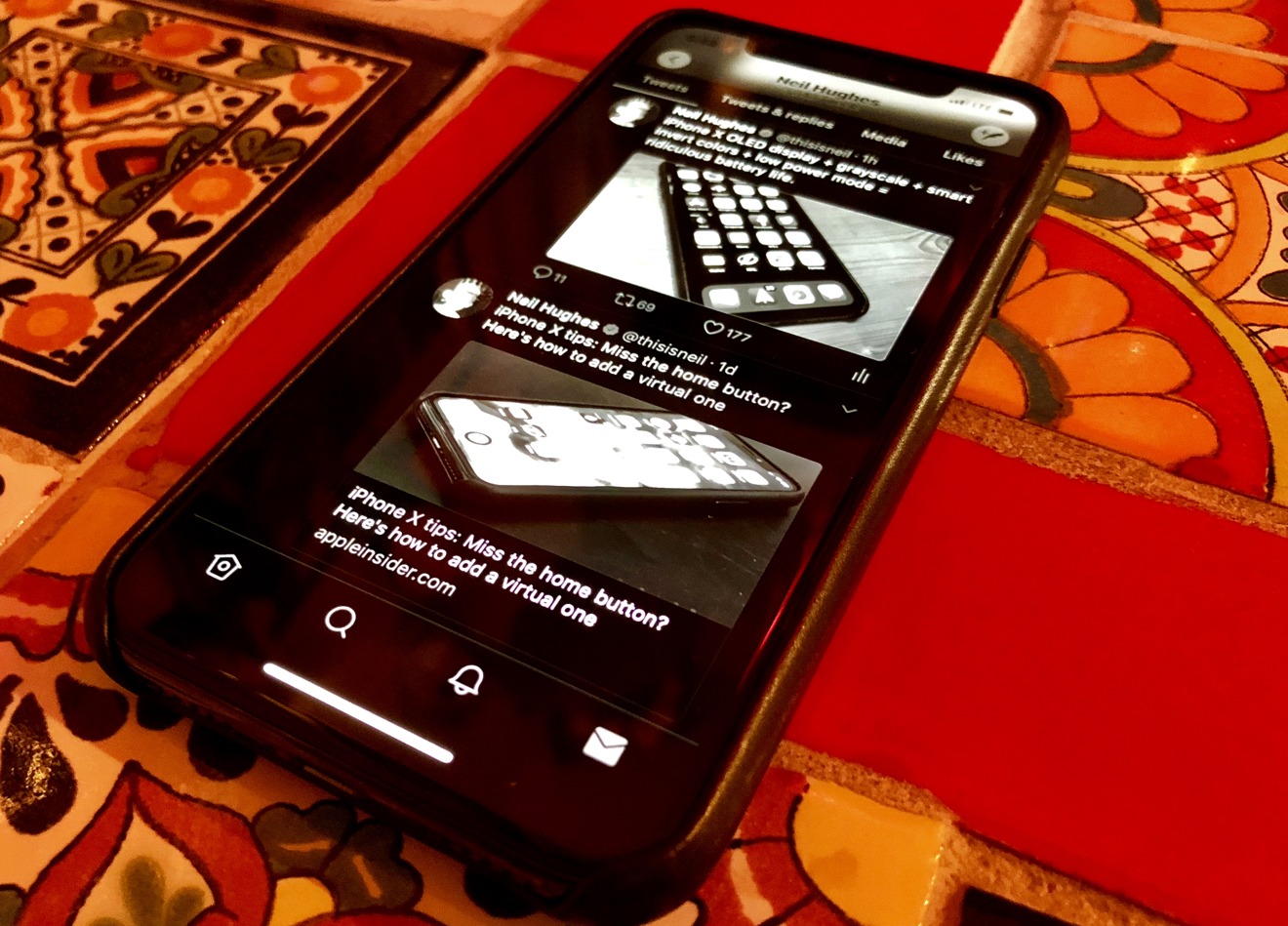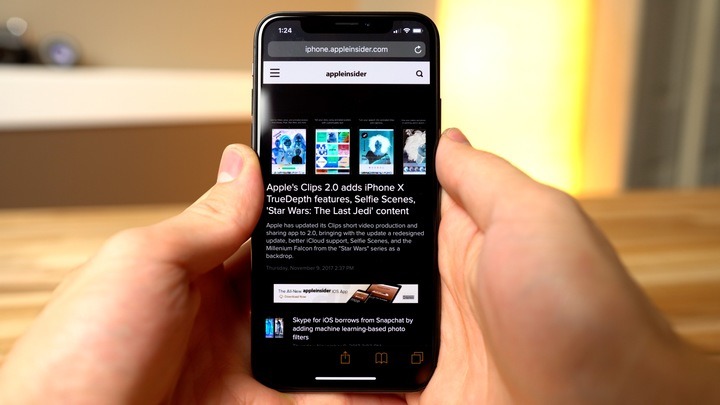After publicizing ways to reduce power consumption on the iPhone X OLED display, AppleInsider has begun to put the methods to the test to get a feel for exactly how much power can be saved. The answer: a lot.
Earlier this week, AppleInsider published a tip detailing how to get more battery life out of your iPhone X with a trio of methods: a true black wallpaper, smart invert colors, and grayscale. These methods are known to reduce power consumption on all OLED screens, because of the nature of the display technology, and anecdotally in day to day use we found that it did, in fact, let us get more uptime out of the iPhone X.
But we decided to dig deeper and get more concrete answers regarding just how much power savings can be had from these methods.
The most impressive test we conducted was using Apple's Safari browser with the Accessibility feature smart invert colors. For our test, we set the iPhone X to maximum brightness with smart invert colors enabled, and left the browser viewing Reddit.
Reddit normally features a white background and black text, but with Apple's smart invert colors option enabled, the back of the screen is now black and the text is white. This is important because black pixels in an OLED are essentially "turned off" and consume far less power — a stark contrast from LCD displays, where the backlight must illuminate all pixels, including black ones.
After three hours with maximum brightness and smart invert colors enabled, the iPhone X battery dropped from 100 percent to just 85 percent.
We then ran the exact same test with an iPhone X running in normal mode — Â that is to say, Reddit was loaded on Safari with a white background and black test. With the backlight turned up to maximum, the battery drained from 100 percent down to 28 percent.
That means that in this extreme comparison, using smart invert colors on the iPhone X while viewing content that is traditionally bright and white, saved a whopping 58 percent of battery.
We also did three hours of testing with the true black wallpaper Apple builds into iOS 11 for iPhone X. With this, the iPhone home screen background is completely black, while icons remain normal.
For this test, smart invert colors was not enabled and we did not use grayscale.
After three hours with maximum brightness and a black wallpaper, the iPhone X battery fell from 100 percent to 77 percent.
The same test was conducted with the default, colorful wallpaper on the iPhone X, and we found that battery fell from 100 percent to 61 percent.
Switching to the true black wallpaper on iPhone X, in an extreme max-brightness test case, saved 16 percent in battery consumption.
iPhone X OLED display + grayscale + smart invert colors + low power mode = ridiculous battery life. pic.twitter.com/vXV821jXrO
— Neil Hughes (@thisisneil) November 5, 2017
Users could push things even further, though at greater cost to appearance and performance, by using the grayscale option built into accessibility in iOS 11.
These color-specific changes only work on the iPhone X, because its OLED display consumes more battery when showing certain colors. Tests show that pure white consumes the most, followed by blue, while green consumes the least.
With this in mind, users could take other drastic measures like adjusting the tone of the display. Night Shift mode lets users reduce the amount of blue on the screen, for example. And the iOS display accommodation settings let users reduce the intensity of bright colors, which should also make for a difference on an OLED display.
iPhones released prior to the iPhone X, which feature LCD screens, cannot take advantage of these settings. But all iPhones, including the iPhone X, will see significant power savings by reducing the brightness of the display. Apple also builds a Low Power Mode into iOS that can be turned on from Settings, or from the Control Center in iOS 11.
 Neil Hughes
Neil Hughes








-m.jpg)






 Christine McKee
Christine McKee
 Malcolm Owen
Malcolm Owen
 Marko Zivkovic
Marko Zivkovic

 Andrew Orr
Andrew Orr
 Andrew O'Hara
Andrew O'Hara
 William Gallagher
William Gallagher



-m.jpg)



30 Comments
You guys are full-powered, no holds barred, radically enhanced Apple product reviewers! I shed tears of joy with every immersive article you all release!
Sinceramente!
Well now I know what to do next time I'm stranded in the wilderness. Perhaps low power mode could also be engaged for even more savings.
Great example of how simply modifying the display a bit can dramatically change battery consumption. Apple should build this into iOS. There are many people who would take advantage of it.
"Whopping" :D
Good job!👍🏾👏🏾